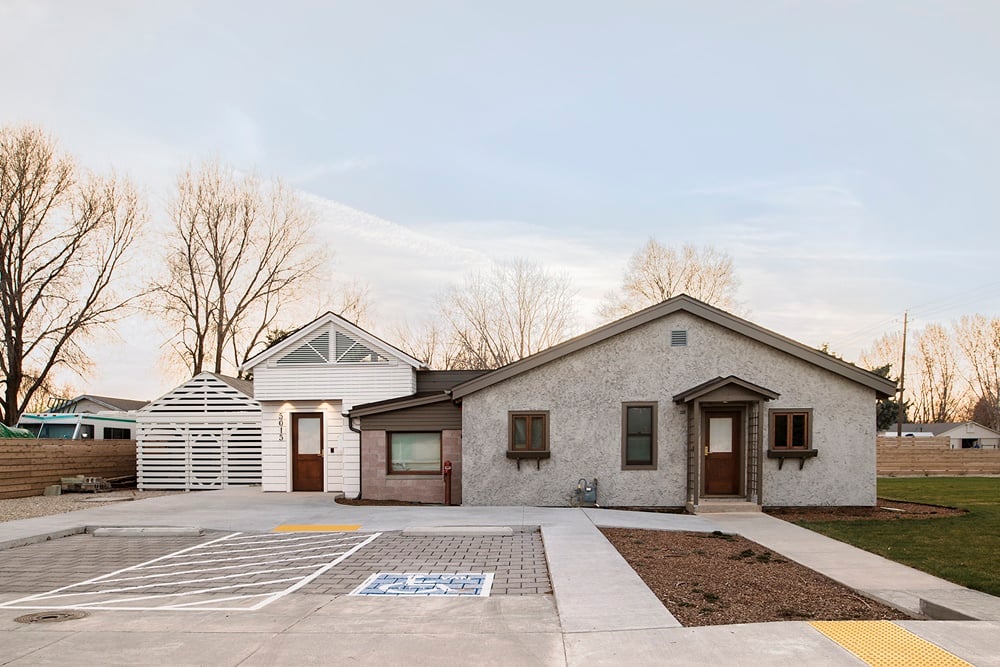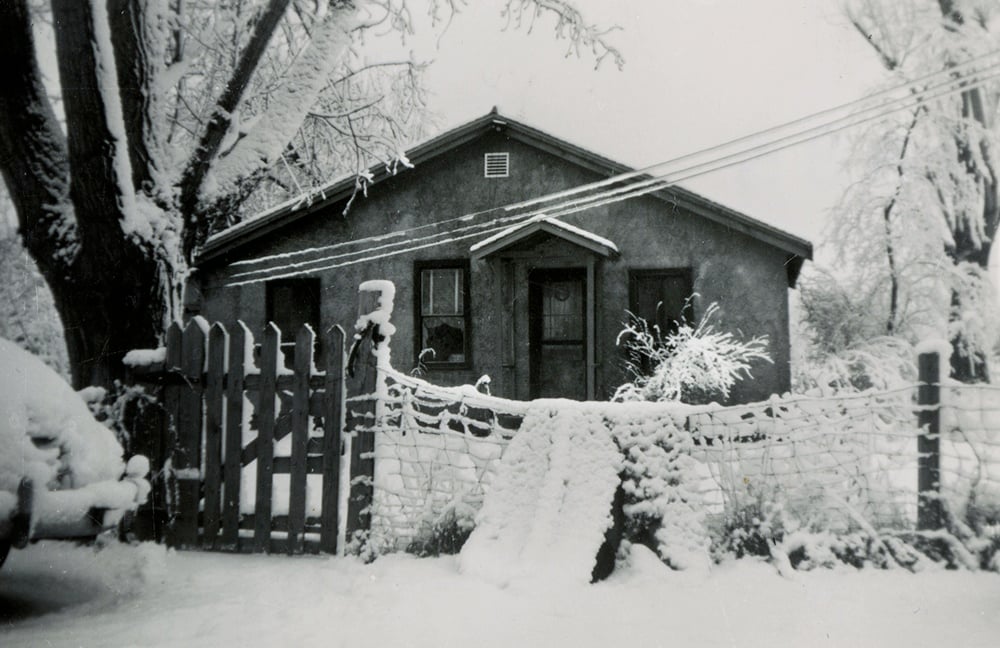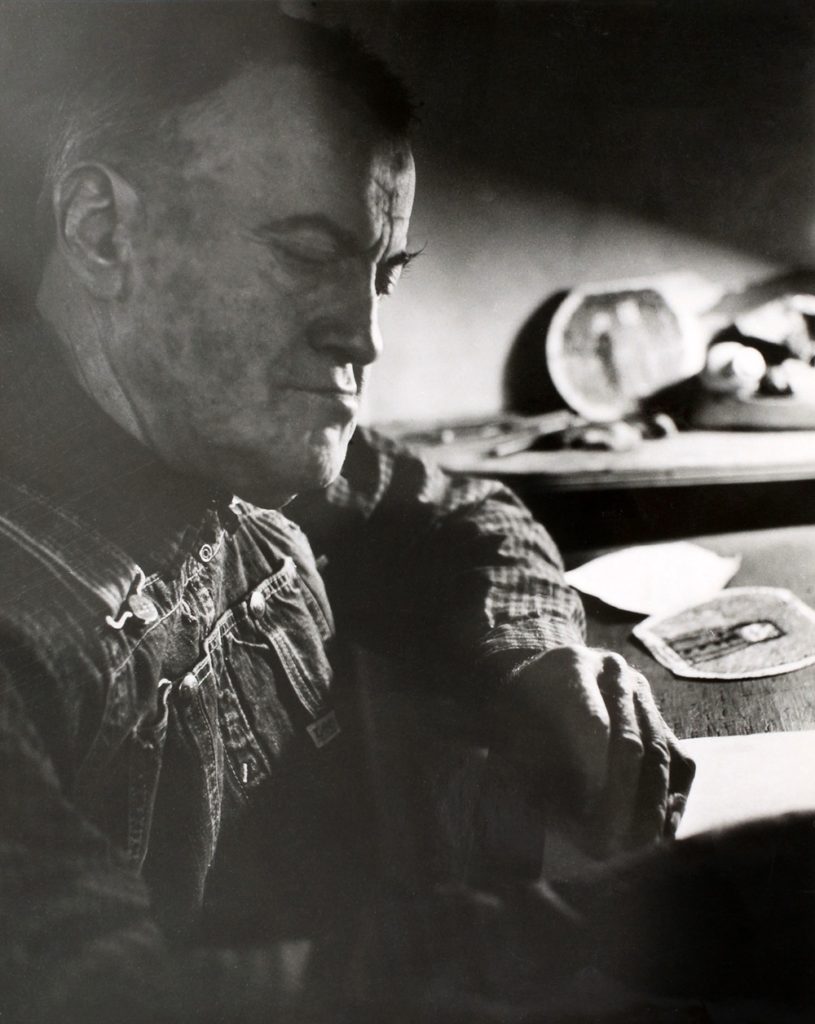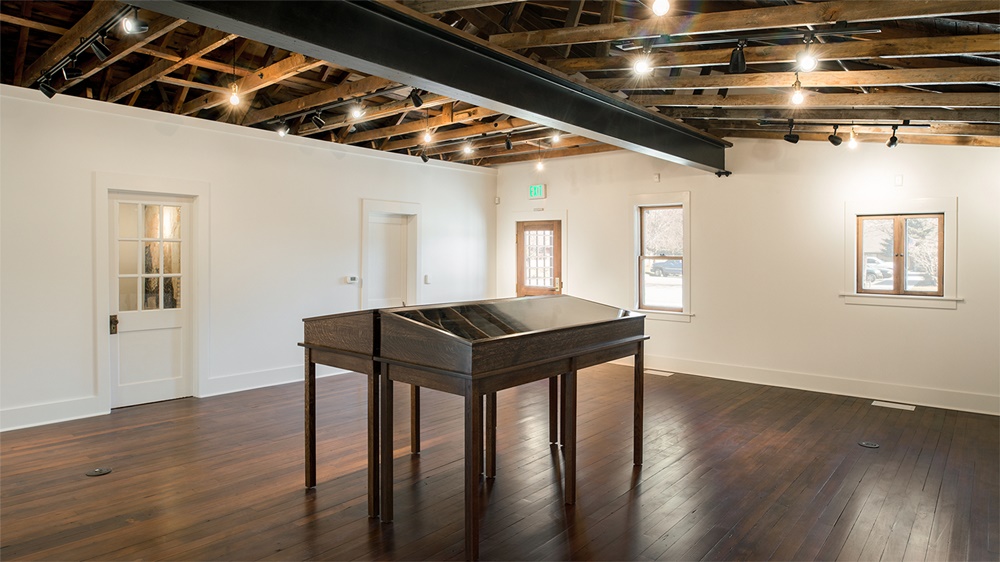Why Does Boise City Get to Keep James Castle Art Work but Previous Owner Didnt
When the city of Boise, Idaho, bought the home of renowned Outsider artist James Castle (1899–1977), it hoped to use the property to pay tribute to the homegrown artist's life and work. As it turned out, the late creative person had much more than a firm to contribute to that mission.
After acquiring Castle's belongings in 2015, the urban center began restoring the home in order to convert information technology into dual-use space: a public gallery to showcase the artist'south oeuvre and a studio residence for working artists. Only the projection yielded a far richer return than anyone could take imagined. Amid the restoration, art experts stumbled upon 11 previously unknown works concealed in the firm's walls.

The exterior of the restored James Castle Business firm. Epitome courtesy of the Boise Urban center Department of Arts & History
Rachel Reichert, cultural sites manager for the Boise City Department of Arts and History, says that the newly discovered works were constitute when the restoration coiffure was searching for studs in the walls. Ten of the works were in the Castle family living room, and one was found a modest volume in one of the bedrooms, Reichert told artnet News. Just they weren't but lying effectually. "All were within walls," she says.
Castle was known for using found materials in his work. So Reichert and an architect began researching the site, looking for materials like sheetrock, wallpaper, and beaverboard that might assist engagement different works. "We were discovering lots of different layers, so nosotros just kept going," she says. What they establish was far more than valuable than an artist's raw material. Together with a gift of 50 works given by the James Castle Collection and Archive, the grouping of donated and salvaged works—61 in total—now take an appraised market value of about $1 million, according to Reichert.

Eugene Street Firm in Snow. James Castle House Winter, Circa 1940 Image courtesy of James Castle Collection and Archive 50.P.
Reichert describes the newly unearthed artworks as "really beautiful representations" of his drawings and other assemblages. As for what might have motivated the artist to stash the works in the walls, Reichert isn't so sure. "Information technology's difficult to say what the intention was. I don't go the sense that it was a storage issue, " she says. "It's almost like a piffling time sheathing."
Castle, who was born in 1899, in nearby Garden Valley, was completely deaf. Equally one of seven children, he moved into the Boise house with the rest of his family in 1931. For nearly vii decades, the entirely self-taught creative person fabricated drawings, handmade books, and other assemblages, using found objects such as chip newspaper and other packaging materials. It wasn't until a nephew, visiting Boise in the 1950s, saw his uncle'southward works that the artist would be "discovered" by the art world. This led to several museum exhibitions in the 1960s and '70s. However, the real catalyst for a broader audience came with exposure at the Outsider Art Fair in the 1990s. Today, Castle is perhaps all-time known for his "soot and spit" drawings, works made using his own saliva.

James Castle. Epitome courtesy of James Castle Collection and Archive L.P.
Castle'due south work has been the subject of retrospectives organized by the Philadelphia Museum of Fine art, in 2008, and by Madrid's Museo Nacional Centro de Arte Reina Sofia, in 2011. According to the artnet Price Database, more than than 50 of his works take come up for auction over the years. The highest toll realized to date, is $43,750, for Untitled Construction, an aggregation of string, soot and spit, and thick paper and card. Information technology sold at a Christie's New York sale of American furniture, art, and folk art this by September on an judge of $40,000 to $60,000.
Now, the newly discovered works and others by Castle will be presented to the public for the first time as project leaders gear up for the official James Castle Business firm opening later this month. The upshot coincides with a major two-day symposium (April 26–27) and includes a keynote spoken language from Nicholas Bell, quondam curator-in-charge of the Smithsonian American Fine art Museum's Renwick Gallery. During his tenure there, Bell oversaw the acquisition of the largest public collection of works by Castle outside Idaho. The 61 Castle works will be on display in an exhibition titled "Betwixt Board and Button," which will run for the first twelvemonth afterwards the opening. Information technology volition be followed by a smaller group of works on permanent brandish thereafter.

Interior of James Castle House. Image courtesy of the Boise Metropolis Department of Arts & History
Reichert believes it's a plumbing fixtures tribute for an creative person whose domicile so straight—and materially—informed his piece of work. "1 of the near incredible parts of this projection was to realize the connection between the house and Castle's work," Reichert says. "We discovered that many of the materials that Castle used in his piece of work were quite possibly the same types of materials that were used to construct the house or to add together on to the house."
Follow Artnet News on Facebook:
Want to stay ahead of the art world? Subscribe to our newsletter to go the breaking news, eye-opening interviews, and incisive critical takes that drive the conversation forward.
Source: https://news.artnet.com/art-world/james-castle-works-boise-home-1266695
0 Response to "Why Does Boise City Get to Keep James Castle Art Work but Previous Owner Didnt"
Post a Comment